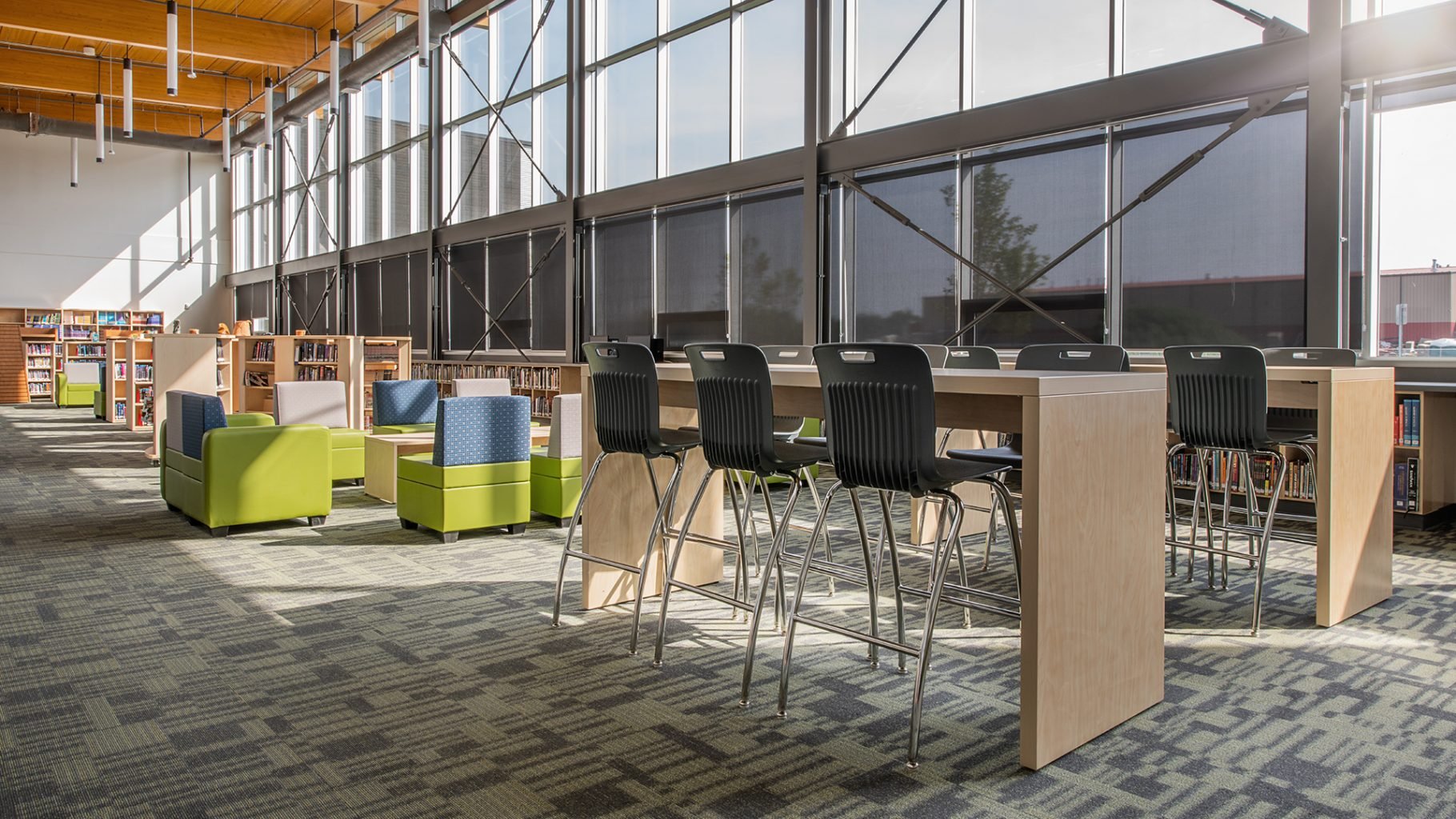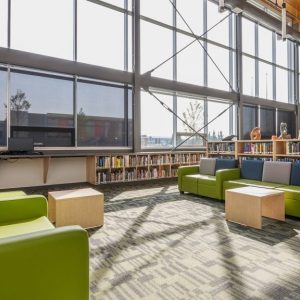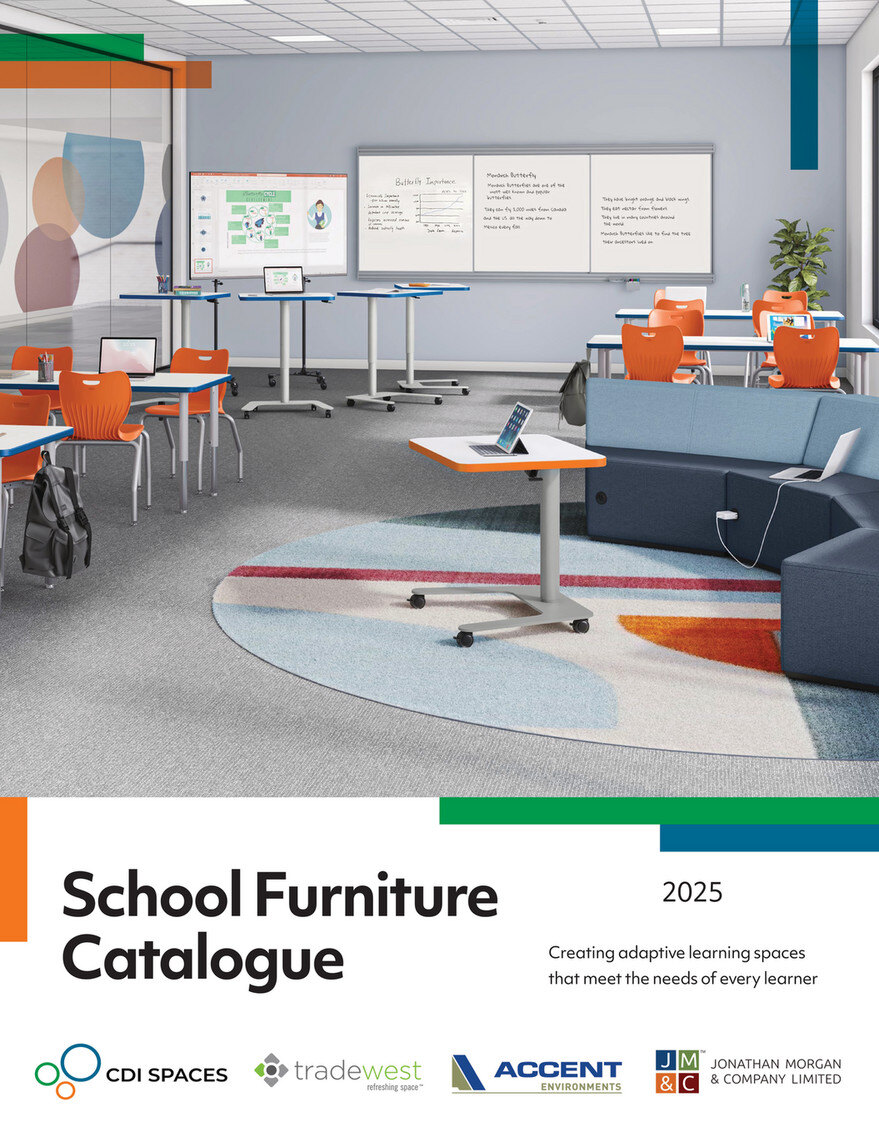How Classroom Design Affects Student Performance
August 18, 2021

Because today’s young learners are a generation unlike any before them, classroom design has a massive impact on both engagement and performance. Because, as research shows, education isn’t just about technology or pedagogy, it’s also about environment.
In fact, research increasingly shows the impact classroom design has on student success: 25%, positive or negative depending on the environment, on annual academic progress. And Dr. Sheryl Reinisch, the Dean of Concordia University-Portland’s College of Education says that well designed classrooms can “ “help children feel safe, secure, and valued. As a result, self-esteem increases, and students are motivated to engage in the learning process.”
To best create an environment ripe for learning – one that accommodates different learning styles and personalities – designers must consider colour (visual stimulation), choice (ownership), complexity (balance), flexibility (configuration), and light (quality and quantity). Harnessing these considerations is crucial to creating successful learning outcomes, but they’re driven by three basic design principles: naturalness, stimulation, and individualization.
Naturalness: Light, Temperature, Air Quality, Nature
Students with more natural daylight and views of nature in their classrooms perform measurably better than students with less, so the bigger the classroom windows, the better. Designing schools with large, operable windows and skylights in addition to arranging classroom furniture around daylight and utilizing shading to prevent glare enhances focus and boosts learning.
Unsurprisingly, extreme room temperatures (too hot or too cold), and poor air quality have a negative impact on performance, decreasing productivity and focus. Optimizing naturalness in an existing classroom space may seem like a challenge, but educators can account for naturalness when designing and arranging learning spaces. Sometimes, it may be as simple as decluttering windows, or even opening them.
Stimulation: Complexity and Colour
Stimulation is all about balance. Both under and overstimulation have adverse effects on student learning, so the goal is to establish balance in visual vibrancy and diversity in classroom design.
Too ordered and organized and students are understimulated and unengaged (think of those old-school orderly desk rows); too cluttered and colourful and the learning environment becomes chaotic, again counterproductive to learning. A good guideline is to find the sweet spot between boring and dramatic: consider composition and balance in the use of shapes and colours in both furniture and displays.
Individualization: Flexibility and Ownership
Equally important to student engagement and performance are the classroom’s flexibility (layout and configurations) and the students’ ownership of the space.
Students feel more engaged and interested in personalized classrooms – where their work is on display and where they can impact how things are displayed and organized.
Individualization is about comfort and familiarity, so student involvement in classroom seating arrangements and décor is just as important to learning outcomes as the type of furniture and layout.
Bringing it All Together
So what can educators do to maximize the effectiveness of their classroom design? While architecture certainly plays a role, many of these classroom design principles can be addressed by replacing the once-standard rows of single desks with flexible furniture and learning zones.
Innovative and interesting classroom furniture is designed to facilitate collaborative configurations and huddle spaces, solitary learning, and student-teacher interaction while also creating a natural feeling and flow through the room.
A variety of seating options can also cater to learning needs that change from student-to-student and from day-to-day for each learner, so furniture designed for moving and rearranging helps teachers integrate new technology into their lessons while creating a visually stimulating and personalized experience for students.


